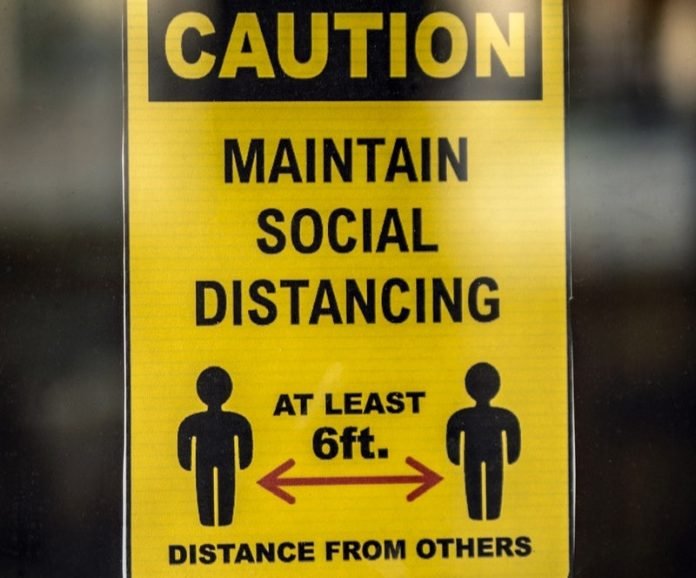
Between March 10 and March 25, 2020, all 50 states and the District of Columbia enacted at least one statewide physical distancing measure to help stop the spread of COVID-19.
In a new study, researchers found these government-issued physical distancing orders significantly slowed the COVID-19 epidemic, leading to an estimated reduction of more than 600,000 cases within three weeks of implementation.
The research was conducted by clinicians at Massachusetts General Hospital (MGH) and elsewhere.
In the study, the team analyzed data from the first five months of the COVID-19 epidemic in the U.S.
They collected data on government-issued orders on statewide physical distancing measures and compared changes in COVID-19 cases and COVID-19-attributed deaths in states that implemented physical distancing measures before and after implementation.
The results show the average daily COVID-19 case growth rate began declining approximately one incubation period (i.e. four days) after implementation of the first statewide physical distancing measures.
The period of time required for the number of cases to double (epidemic doubling time) increased from approximately four days to eight days within three weeks of implementation.
These findings are consistent with other recently published work.
What is unique to this new study is researchers found that the average daily COVID-19-attributed death rate also began declining after the implementation of physical distancing measures, which prior to this study had not been analyzed.
The study looked at a wide array of measures, including school and business closures, restrictions on public gathering, and shelter-in-place orders.
Most combinations of these orders appeared to have similarly beneficial effects.
Because the different types of physical distancing measures were generally implemented in close temporal proximity to each other, the research team was unable to determine specifically which types of physical distancing measures were most effective.
The findings of the model suggest that statewide physical distancing measures reduced the total number of reported COVID-19 cases by approximately 1,600 cases by one week after implementation and—due to the exponential growth of the spread—by approximately 621,000 cases by three weeks after implementation.
The team says many have strongly suspected that physical distancing policies helped interrupt COVID-19 transmission during the early days of the U.S. epidemic.
The findings show that physical distancing measures slowed the growth of the COVID-19 epidemic and saved lives, and also bought health care leaders some time to fortify their surge capacity to deal with the epidemic.
One author of the study is Mark J. Siedner, MD, MPH, an infectious diseases physician at MGH.
The study is published in PLOS Medicine.
Copyright © 2020 Knowridge Science Report. All rights reserved.




